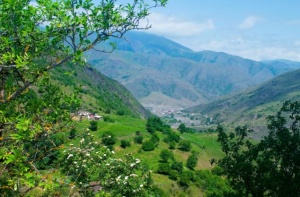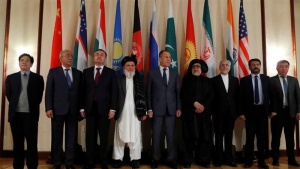On July 7th, a Taliban delegation visited Moscow and met with the Kremlin envoy for Afghanistan, Zamir Kabuluv. This visit took place against the backdrop of increasing Taliban gains in Afghanistan. One might ask how the Taliban, a movement designated as a terrorist organization in Russia, is being welcomed in Moscow by official Russian representatives. To understand how the Taliban achieved this diplomatic achievement, an examination of the historical relations between Russia and the Taliban, as well as Russia’s interests in Afghanistan, is needed.
Russian-Taliban Relations: Historical Background
On February 15th, 1989, the last Soviet soldier crossed the Friendship Bridge between Afghanistan and the Soviet Union. The humiliating Soviet withdrawal greatly impacted the USSR and Russia’s foreign policy towards Afghanistan. When the Afghan Civil War erupted in the 1990s, Russia tried to avoid any involvement in the conflict. However, in 1999 Russia got off the fence and threw its support behind the anti-Taliban Northern Alliance. The catalyst for its policy shift was the Taliban’s recognition of Chechnya and its ties to international Islamist radical groups which operated in Chechnya and were loosely allied with the Taliban ally al-Qaeda.
Following the attacks of 9/11, President Putin was one of the first foreign leaders to reach out to Washington and pledge his support for the U.S response. Russia supplied the U.S.-led coalition against the Taliban and al-Qaeda with intelligence, opened its airspace to planes carrying humanitarian aid, and accepted the establishment of U.S. bases in Central Asia. Following the initially successful U.S. invasion, Russia was reduced to the role of spectator for the rest of the decade, mainly criticizing and trying to eliminate the growing flow of drugs out of Afghanistan into Russia.
The Shift in Russian-Taliban Relations
The major policy shift towards the Taliban occurred in the mid-2010s, following the 2014 breakdown of Russian-Western relations over Ukraine. The shift was propelled by both national security and geopolitical concerns. First, the rise of the Islamic State of Iraq and the Levant – Khorasan Province (ISKP) in Afghanistan raised alarms in Moscow. Russia was increasingly concerned by the threat ISKP posed to Russia and its Central Asian allies.
According to Moscow’s assessment, the threat from ISKP surpassed the threat the Taliban posed because the Taliban had no regional aspirations beyond Afghanistan, while ISKP posed a regional and global security threat. Russia believed that the Taliban could combat ISKP more effectively than the Afghan National Defense and Security Forces. For Russia, supporting the Taliban was seen as a logical step, or as the Kremlin envoy Zamir Kabuluv explained it: “The Taliban are fighting in Afghanistan against the people we fought in Syria, that’s why our interests coincide”.
In its support of the Taliban today, Russia chooses to turn a blind eye to the reemergence of al-Qaeda in more than 15 provinces in Afghanistan and reports of Taliban collaboration with ISKP. Russia relies on the security assurances the Taliban promises Russia. The Taliban assures Russia that it will help to secure the border with Central Asian states and prevent spillover of fighting and terror activities to Russia’s southern strategic frontier.
Second, Russia sees Afghanistan as an opportunity to harass and undermine the U.S. and the West as part of their great power geopolitical competition. By challenging the West in Afghanistan, Russia wishes to reassert itself as a dominant geopolitical player in the region after its status was weakened by the fall of the Soviet Union. It has been reported that Russia supported the Taliban efforts against the West and the Afghan government with weapons and funds. Furthermore, Russia was accused of offering bounties to Taliban-linked groups for killing coalition forces in Afghanistan during the U.S.-Taliban peace talks.
Conclusions
Russian-Taliban relations have changed over the years, changing from hostility to cooperation as part of their great power competition. The U.S. withdrawal from Afghanistan is seemingly a favorable outcome for Russia. This development, however, could eventually backfire and undermine Russia’s efforts to gain regional stability and dominance. A Taliban takeover could further destabilize neighboring Central Asian countries, requiring Russia to divert attention and military resources to Central Asia to protect its allies. Russia might soon find out that you should be careful what you wish for.










